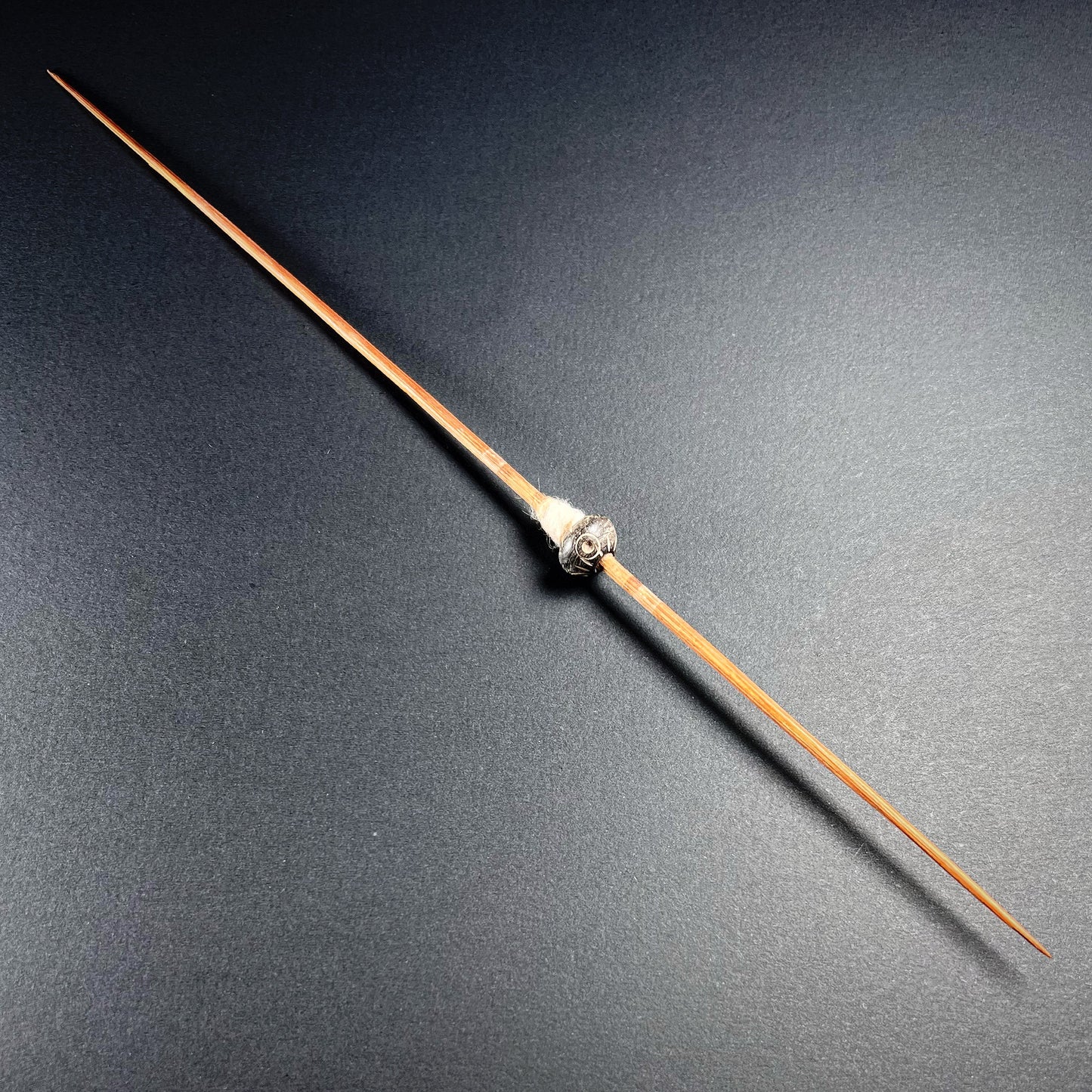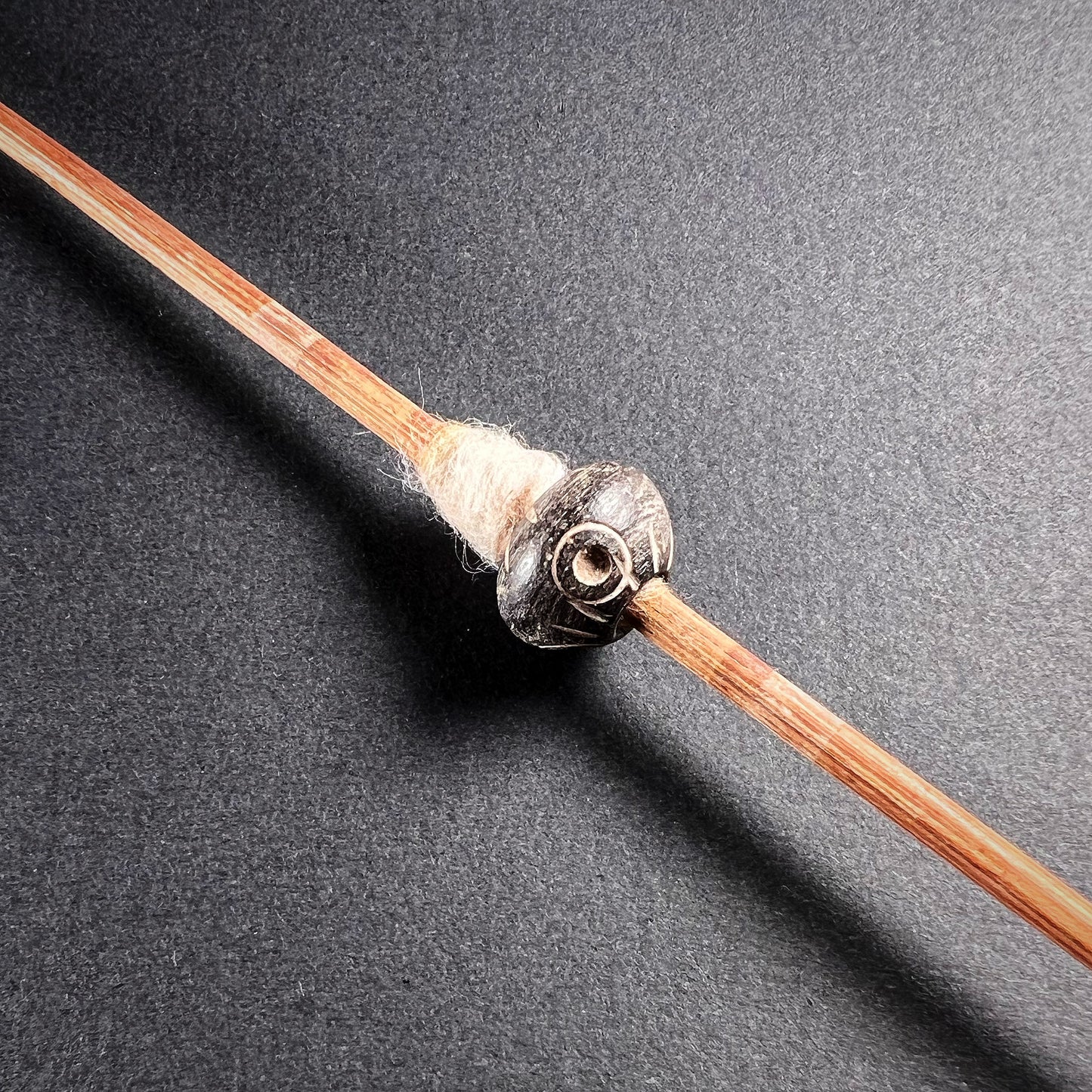Nazca Thorn Spindle with Ceramic Whorl
Nazca Thorn Spindle with Ceramic Whorl
Couldn't load pickup availability
Pre-Columbian Era, Nazca culture, 200 BC–600 AD, Peru
This fascinating Nazca thorn spindle with an attached ceramic whorl is a remarkable artifact from the Pre-Columbian Nazca culture, dating from 200 BC to 600 AD. It represents an essential tool in the production of textiles, a highly developed craft in Nazca society. The spindle, made from a thorn, retains remnants of fine-spun cotton threads, giving us a glimpse into the textile practices of the Nazca people. The ceramic whorl, with its smooth and balanced shape, would have been used to help maintain consistent tension while spinning.
What makes this piece particularly special is the vivid use of red, black, white, and yellow pigments that highlight the needle and bead, showcasing the artistic sensibility of the Nazca artisans even in their everyday tools. Textiles were highly important to the Nazca culture, both for daily use and ceremonial purposes, and were often included as grave goods in burials, indicating the role of woven garments in social and ritual practices.
The well-preserved condition of the spindle and the remaining cotton threads is an extraordinary testament to the skill and daily life of the Nazca civilization, offering us insight into their rich textile tradition and the craftsmanship that supported their intricate rituals and social structure.
Excellent condition. Surface wear and abrasions commensurate with age and use. Small chip and loss to tip of needle. Faded colors. Size approx. 29,5cm x 0,2cm.
Provenance: From the estate of Paul Ragnar Wedendal Sr. & Paul Wedendal Jr. Collected in the 1940's to 1950's.
For a similar examples see:
Spidle, The Cleveland Museum of Art, Accession number: 1948.484 (https://www.clevelandart.org/art/1948.484)
Spidle, The Metropolitan Museum of Art, Accession number: (https://www.metmuseum.org/art/collection/search/315779)
References and further reading:
The Nasca, Helaine Silverman & Donald A. Proulx, Blackwell Publishers, Malden, 2002.
The Body Context: Interpreting Early Nasca Decapitation Burials, Lisa DeLeonardis, Latin American Antiquity, 2000, vol. 11, No. 4, pp. 363-368.
Nazca Civilization, Mark Cartwright,World History Encyclopedia, Last modified May 23, 2014. (https://www.worldhistory.org/Nazca_Civilization/)



-
Shipping
The shipment will be prepared in the course of 3-5 days and dispatched via Posti Group Oyj or purchased item(s) can be picked up from our shop during the store's opening hours (Tarkk’ampujankatu 4, 00140, Helsinki, Finland). Within the Finland, all items are shipped via Posti Group Oyj unless otherwise requested. We pack the items carefully and mainly in recycled materials because we want to save nature. You will receive the tracking number for your items by e-mail.
-
Returns
Returns and exchange will be accepted within fourteen days (14) of receipt at the purchaser’s cost to include freight and packaging. Items must be returned in the same condition as when they were shipped, and will not be accepted if damaged or altered in any way. Please inform us via email (info@gotanmaailma.fi) or by calling +358408408352 before sending. We do not accept returns more than 14 days after delivery.



